NRCS PIA In Action: Team Assesses Maui Damage for Emergency Assistance
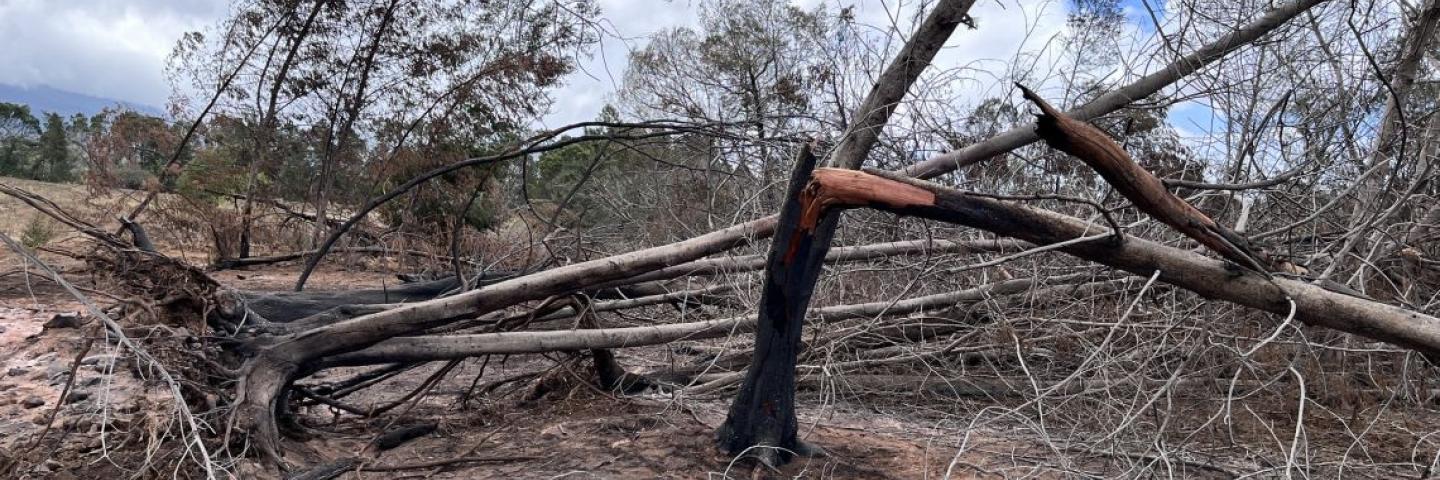
“Assistance in recovering from catastrophic events like this is essential in order to get food production back up and land management practices back in place to protect the community and the land,” said Meidell, Haleakala Ranch.
Standing on a wind-swept upland range with a view down to the Maui coast and the charred grasses that lay between, J. Scott Meidell, of Haleakala Ranch, came armed with a plan for recovery.
Meidell, president of the Haleakala Ranch Company, huddled with an assessment team from the U.S. Department of Agriculture Natural Resources Conservation Service of the Pacific Islands Area whose mission is to spearhead efforts to provide emergency disaster assistance to private landowners, farmers and ranchers impacted by the recent Maui wildfires.
“Assistance in recovering from catastrophic events like this is essential in order to get food production back up and land management practices back in place to protect the community and the land,” said Meidell, emphasizing the ranch’s 135-year history of taking care of the land through their agriculture leases and cattle raising operations.
The NRCS PIA assessment team toured affected areas of Pūlehu, Olinda and Kula in Upcountry Maui Aug. 23 – 24 to determine which NRCS programs would best address their needs, said James Eller, assistant director for NRCS PIA Field Operations, who led the assessment team, which included multi-disciplined experts from NRCS PIA headquarters in Honolulu and its Kahului Service Center in Kahului, Maui.
Within hours of touching ground, the group met with landowners and potential project sponsors. Their meeting with Meidell took place in a makeshift field office out of the tailgate of a pickup truck in a section of the 27,000-plus acre ranch that, according to Meidell, saw nearly 2,500 acres burn. He handed out copies of maps that mark burn areas and lay out proposed projects for revegetation and improved wildfire mitigation.
That type of collaboration is indicative of NRCS’s one-on-one approach and intent to urgently identify needs and possible solutions. “I really feel like we were successful in that,” said Eller. “We’ve identified the programs, coordinated with all the partners, and, moving forward, we have a much better plan than we did coming into it. We also identified some of the landowners who were impacted (by the wildfire) and have garnered their support moving forward.”
The group plugged into a network of city, state and federal agencies such as the Maui Soil and Water Conservation District, U.S. Forest Service Burned Area Emergency Response team, Farm Service Agency and FEMA, all assessing damages to determine how their respective programs can assist in the monumental recovery efforts.
Consequently, the Maui SWCD agreed to sponsor future projects under the NRCS Emergency Watershed Protection or EWP Program, which grants technical and financial assistance for projects to combat flooding and erosion that threaten life and property, said Eller. Projects can include actions to remove debris from stream channels, reshape and protect eroded banks, correct damaged drainage facilities, repair levees and structures, and reseed damaged areas.
For NRCS leaders, urgency is paramount. “I’m hopeful in the next week or so we can solidify (the needs of) all those folks who were impacted by the fires and have some projects on the ground,” he said.
Quickly delivering help is key due to the conditions exacerbated by fire damage, namely soil erosion and the potential flood risks it poses, said Gerald Gregory, NRCS PIA district conservationist for Maui, after surveying a landowner’s property that contained a plunging gulch that bordered a public roadway and residential housing, confirming it’s near vertical walls lacked vegetation.
“In these post-fire situations, especially with this (burn site) being so close to the gulch and the sheer amount of invasive woody species that got burned and are still standing dead …,” said Gregory, “my main concern is soil and debris destabilizing going into that gulch and causing backups at various infrastructure sites or internal stream blockage areas … This site is already vulnerable for sedimentation and runoff.”
A history of flooding in the area gives additional cause for concern for Upcountry communities and those downstream, he said, emphasizing that “there’s significant threat to property and lives downstream, and it needs to be addressed immediately.”
Sahaythaya Mizec, 71, known as Nui, said time is of essence for the survival of her small farm where eggplant, corn, onion and avocado, among others, once grew in now-blackened fields. Like so many other Maui residents in need of help, she’s determined to see it through – with the right assistance. “I’ll start new again,” she declared. “I will.”
More information about the NRCS Emergency Watershed Protection Program is at EWP.
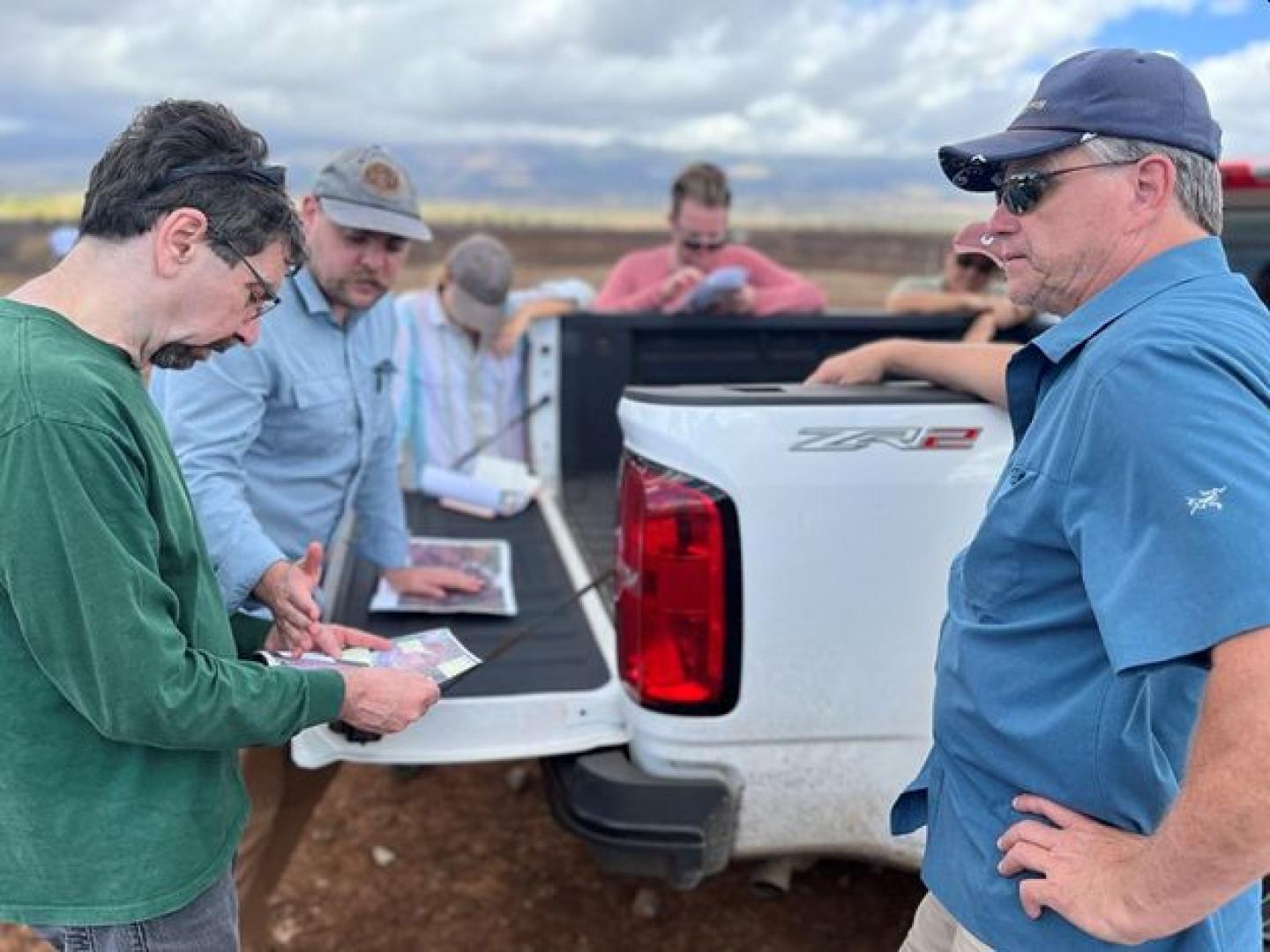
(l. to r.) Michael Constantinides, NRCS Pacific Islands Area assistant director for Technology, and Gerald Gregory, NRCS PIA district conservationist for Maui, review a map of Haleakala Ranch burned areas and discuss a proposed recovery project plan with J. Scott Meidell, Haleakala Ranch Company president, during an assessment Aug. 23 on the ranch in Upcountry Maui.
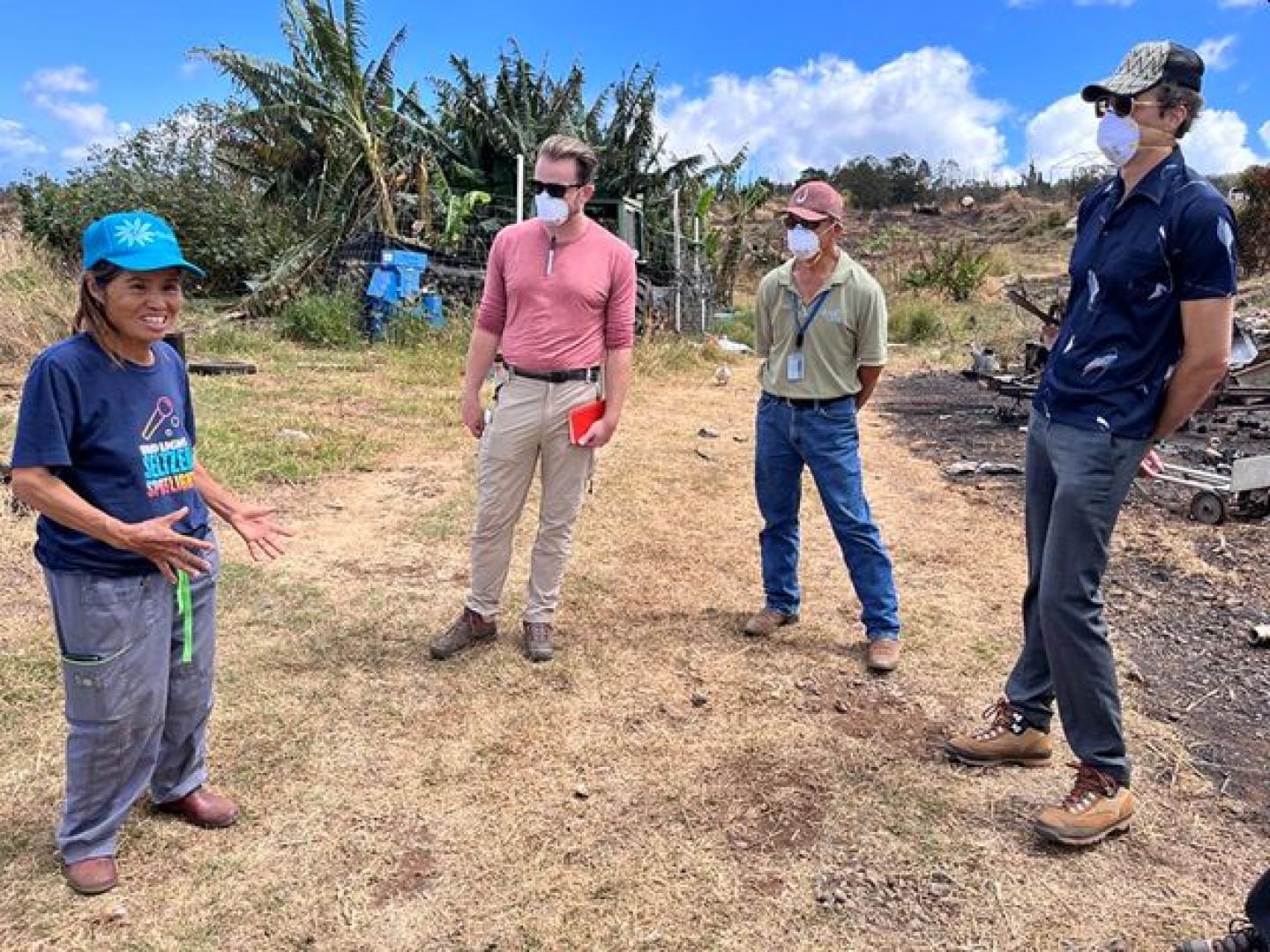
Sahaythaya Mizec, known as Nui, speaks with members of a NRCS Pacific Islands Area assessment team touring her farm in Upland Maui Aug. 23 to survey damage caused by recent fires that swept across the island.
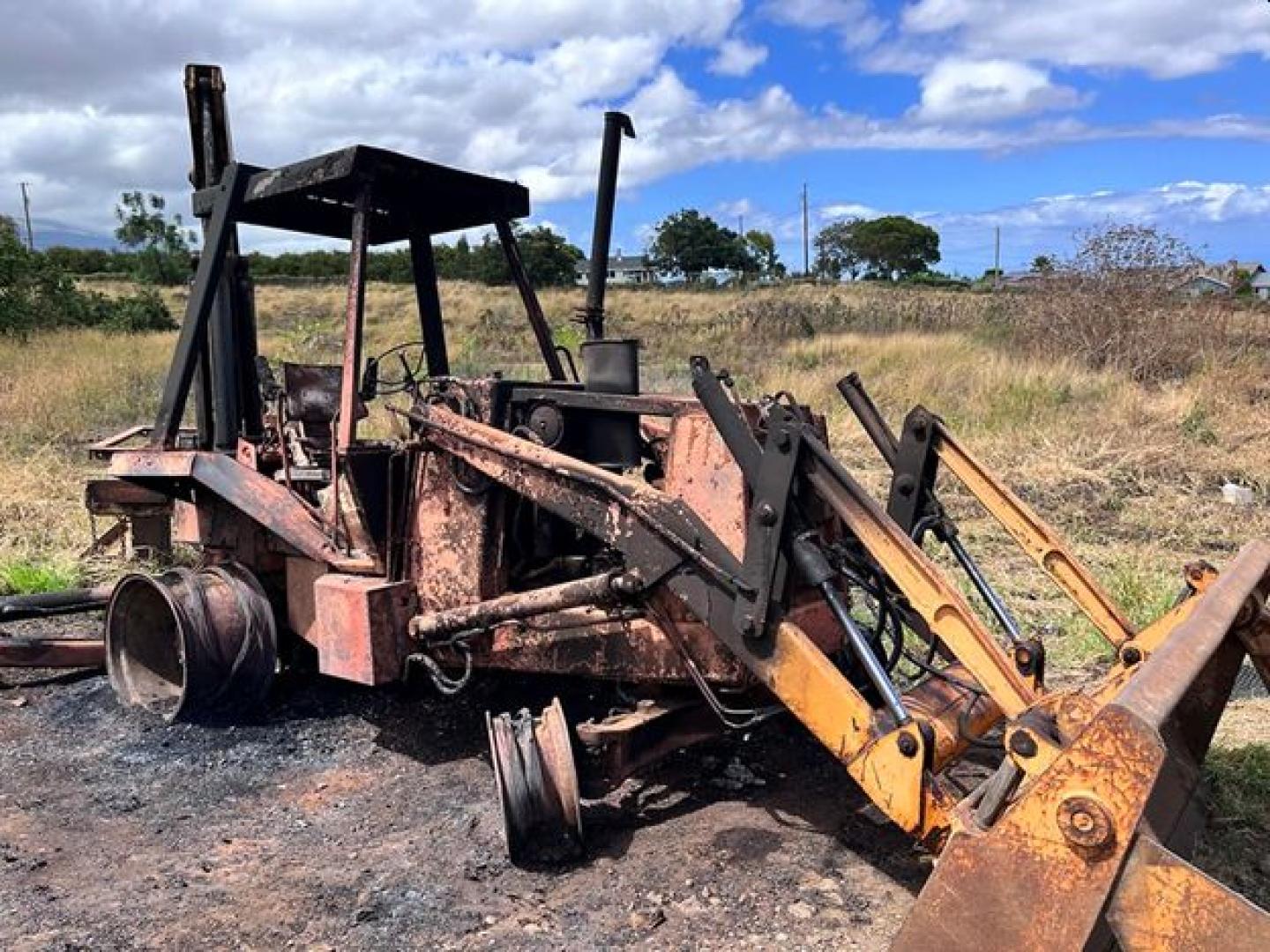
The charred frame of a tractor shows the type of damage suffered by Maui farmer Sahaythaya Mizec, known as Nui, who hosted members of a NRCS Pacific Islands Area assessment team touring her farm in Upland Maui Aug. 23.

Members of an NRCS Pacific Islands Area assessment team, (l. to r.) Nicholas Haas, an engineer and watershed planner, John Mathews, assistant director for Engineering, and Carl Hashimoto, a civil engineer, examine burned fields on a farm in Upcountry Maui Aug. 23.
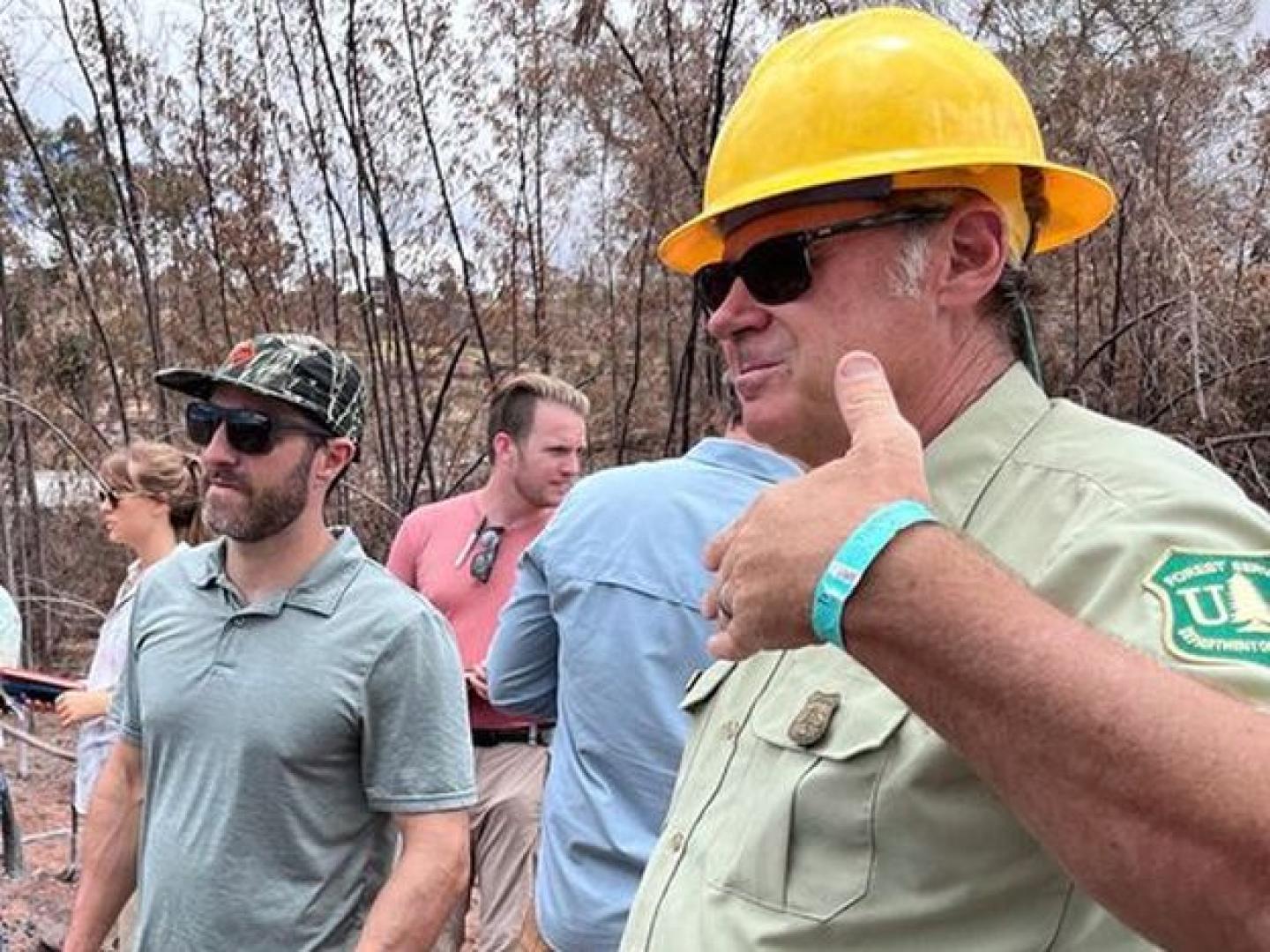
James Eller, assistant director for NRCS Pacific Islands Area Field Operations, speaks with Todd Ellsworth (foreground), a member of the U.S. Forest Service Burned Area Emergency Response team, during an assessment Aug. 23 of areas in Upcountry Maui affected by recent wildfire damage. They stand at the edge of a plunging gulch made more unstable by the loss of vegetation from fire.
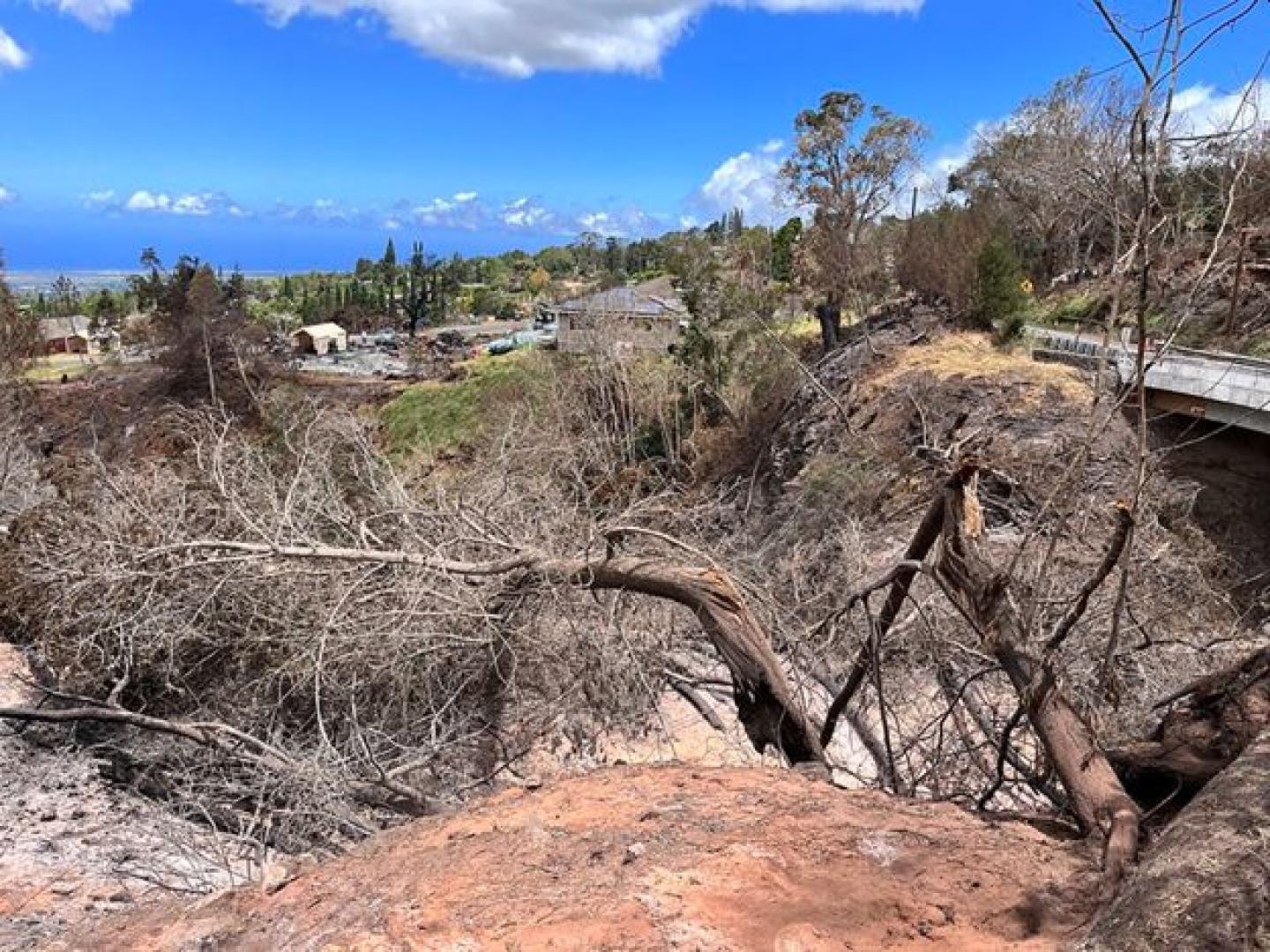
A gaping gulch on privately-owned land borders a public roadway and residential housing, posing a risk for further soil erosion, damage to infrastructure and flooding. A NRCS Pacific Islands Area assessment team confirmed it’s near vertical walls lacked vegetation during a visit Aug. 23 of areas in Upcountry Maui affected by recent wildfire damage.

